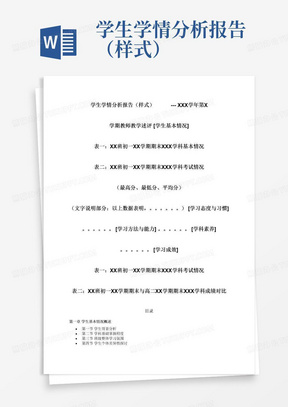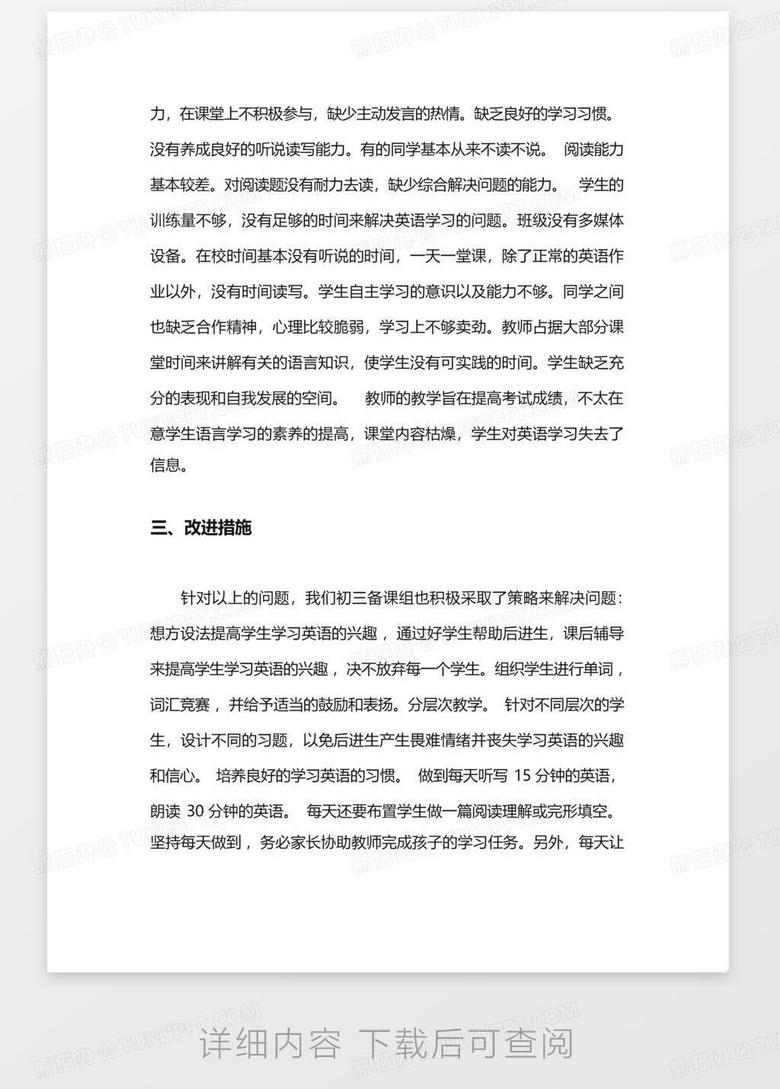 文章正文
文章正文
Title: Enhancing English Learning through -Powered Student Performance Analysis
Introduction
In the rapidly evolving landscape of education, Artificial Intelligence () has emerged as a powerful tool, capable of transforming the way we assess and enhance student learning. This article explores the role of in supporting student performance analysis in English education, focusing on the challenges faced by teachers and the benefits that -driven solutions can offer. Specifically, we will delve into the implementation of in analyzing student performance in the context of the Foreign Language Teaching and Research Press (FLTRP) Grade 8 English textbook and教版 (Hebei Education) Grade 6 English textbook.
I. Research Background
The FLTRP Grade 8 English textbook is a crucial resource for middle school students in China. However, it faces several challenges in the contemporary educational landscape. English, as a global lingua franca, is spoken with various accents and dialects, which can pose difficulties for learners. Additionally, the diverse learning needs and abilities of students necessitate a personalized roach to teaching and assessment.
A. -Powered Student Performance Analysis for Grade 8 FLTRP English: My Days of the Week, Part B
1. Emotional Attitude Goals
The primary objective of using in the analysis of student performance in this unit is to foster a positive attitude towards learning. The -powered analysis ms to:
- Motivate students to actively engage in the learning process.
- Cultivate an interest in English language learning.
- Develop students' confidence in communicating with new friends in a warm and friendly manner.
2. Learning Strategy Goals
The -powered analysis also focuses on enhancing students' communicative abilities, enabling them to interact with strangers without fear. The specific goals include:
- Developing students' ability to ly language skills in real-life situations.
- Identifying students who struggle with language acquisition and providing targeted support.
- Encouraging students to overcome their shyness and participate actively in class.
3. Challenges and 's Role
The -powered analysis reveals several challenges faced by students, including:
- Uneven knowledge and skill distribution among students.
- Significant disparities in learning abilities.

- Limited lication of language skills in practical scenarios.
plays a crucial role in addressing these challenges by:
- Providing comprehensive and intelligent records of students' learning progress.
- Identifying students who require additional support.
- Offering personalized recommendations to enhance learning outcomes.
II. -Powered Student Performance Analysis for Grade 9 FLTRP English: Unit 6 When was it invented?
The lication of in analyzing student performance in Unit 6 of the FLTRP Grade 9 English textbook focuses on the following aspects:
1. Content Analysis
helps in evaluating students' understanding of the unit's content, including vocabulary, grammar, and comprehension skills. It provides insights into:
- The level of students' comprehension of historical events and inventions.
- Their ability to ly language skills in discussing past events.
- The effectiveness of teaching strategies in enhancing content retention.
2. Learning Strategies
identifies students' preferred learning strategies and provides recommendations for improving their learning outcomes. It focuses on:

- Analyzing students' engagement with various learning activities.
- Identifying effective learning strategies that can be shared with other students.
- Encouraging students to experiment with different learning roaches.
III. -Powered Student Performance Analysis for Grade 6 Hebei Education English: Lesson 3 Making Breakfast
The -powered analysis of student performance in the教版 Grade 6 English textbook, specifically Lesson 3 Making Breakfast, focuses on vocabulary acquisition and practical language lication. The analysis reveals the following insights:
1. Vocabulary Acquisition
evaluates students' ability to grasp new vocabulary related to cooking and meal preparation. It highlights:
- The level of students' understanding of new words and phrases.
- Their ability to use these words in sentences.
- The effectiveness of vocabulary teaching methods.
2. Practical Language lication
assesses students' ability to ly the language skills learned in the lesson to real-life situations. It focuses on:
- Students' ability to follow instructions and recipes.
- Their confidence in using English to describe cooking processes.

- The effectiveness of interactive learning activities in enhancing language lication.
IV. Benefits of -Powered Student Performance Analysis
The integration of in student performance analysis offers several benefits to both teachers and students:
1. Personalized Learning
-powered analysis enables teachers to tlor their teaching methods to meet the individual needs of students, thereby enhancing learning outcomes.
2. Efficient Assessment
automates the assessment process, saving teachers valuable time and effort. This allows them to focus on other aspects of teaching, such as providing personalized feedback and support.
3. Improved Student Engagement
By offering personalized recommendations and identifying areas of improvement, helps in keeping students engaged and motivated in their learning.
4. Enhanced Communication Skills
-powered analysis helps in developing students' communicative abilities, enabling them to express themselves effectively in English.
Conclusion
The lication of in student performance analysis holds immense potential for transforming English education. By addressing the diverse learning needs of students and providing personalized support, -powered analysis can significantly enhance the learning experience. As educators continue to explore the possibilities of in education, it is essential to strike a balance between technology and human interaction to create an inclusive and effective learning environment.